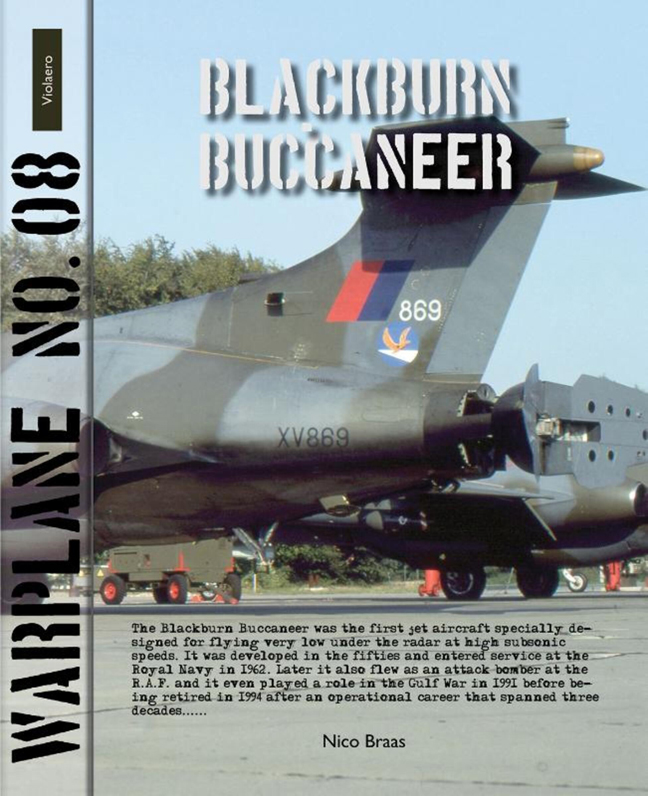Book contents
- Frontmatter
- Introduction
- In service at the royal navy
- Buccaneer Photo-Recce crate
- South African nuclear bombers
- In service at the R.A.F. … at last
- Martel Missile (AJ.168) (AS.37)
- WE177 nuclear bomb
- The Buccaneer goes to war
- Museum piece
- Final phase out and retirement
- Sub-versions S.2:
- Accidents and Incidents
- Survivors
- Technical Description
- References
- Credits
Buccaneer Photo-Recce crate
Published online by Cambridge University Press: 20 February 2024
- Frontmatter
- Introduction
- In service at the royal navy
- Buccaneer Photo-Recce crate
- South African nuclear bombers
- In service at the R.A.F. … at last
- Martel Missile (AJ.168) (AS.37)
- WE177 nuclear bomb
- The Buccaneer goes to war
- Museum piece
- Final phase out and retirement
- Sub-versions S.2:
- Accidents and Incidents
- Survivors
- Technical Description
- References
- Credits
Summary
The Buccaneer had a reconnaissance capability, the bomb bay could accommodate a 2,000 litre ferry tank, as well as a photo-reconnaissance “crate” or a cargo container.
The reconnaissance crate could accommodate a photoflash flare dispenser and up to six F.95 cameras; these could be used in various configurations of long-range and wide angle tasks, that could have the cameras mounted in vertical, oblique, or (using a blister in the pack) forward-looking orientations. The photoflash unit was rarely used, with the Royal Navy preferring to use the Glow worm 3 inch rocket flares, with eight mounted on the Buccaneer’s stores pylons, for night operations. There had been plans to develop a bomb bay tanker pack, but the underwing pack proved adequate.
There was also a plan for a pack with a twin Aden 30 mm cannon, but it was abandoned and the Buccaneer would never carry gun armament. SAAF Buccaneers also had a photographic reconnaissance capability.
The RAF inherited some reconnaissance crates along with ex-Royal Navy Buccaneers, but RAF Buccaneers rarely, if ever, flew reconnaissance missions. I once had an RAF Buccaneer crew ask me how to fit one of these crates as they had found one in a hanger, I told them just to leave it alone.
RAF Buccaneer crew on maritime patrols were sometimes issued with hand-held cameras to photograph any possible Warsaw Pact vessels.
With the growing worldwide anti-Apartheid awareness it was not replaced by a new one! The last S.50’s were completed in 1966. They were transported to South Africa by ship. The 15 remaining South African Buccaneers were operational at a single S.A.A.F. squadron, no. 24, based at Waterkloof and flew normally with two underwing fuel tanks and as standard armament four French Nord A.S.30 missiles during strike missions. They were actively used during the ‘Border War’ with Angola over a period of almost ten years (1978-1988). The South African Buccaneers were retired by the end of June 1991. Just like the Royal Navy Buccaneers, S.A.A.F. Buccaneers also carried out strikes on wrecked tanker vessels to prevent massive spread of crude oil. These strikes took place in 1971 and 1972 on the vessels Wafra and Silver Castle.
- Type
- Chapter
- Information
- Blackburn Buccaneer , pp. 19 - 21Publisher: Amsterdam University PressPrint publication year: 2014



